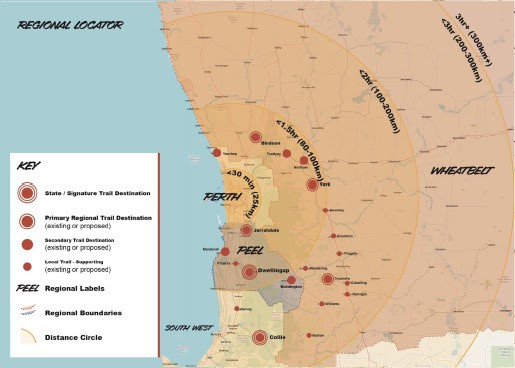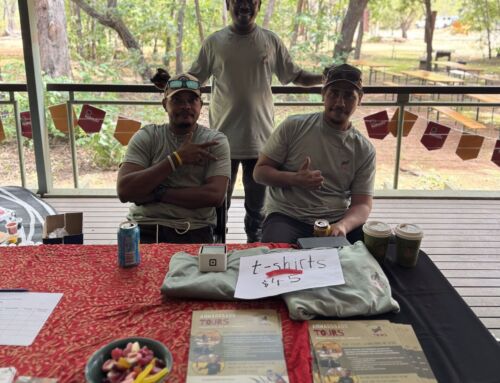TRC Tourism recently completed a project in Western Australia that sought to apply the power of circles and proximity to guide regional Perth’s trail tourism planning. We spoke to our consultant Chris Ord about the process, the outcome and how it also relates more broadly to all tourism planning.
“The longest absence is less perilous to love than the terrible trials of incessant proximity,” wrote American poet and playwright Edna St Vincent Millay.
Musing on the intricacies of love, you could – with some creative thinking – transpose the same sentiment to the intricacies of strategic destination management and experience design. A long bow drawn on first pass, however it was a core lesson that lay at the heart of a recent project that TRC Tourism undertook for the Western Australia Department of Local Government, Sport and Cultural Industries.
We were charged with investigating how ‘concentric circles’ could be applied as a framework for tourism planning in general and trail planning specifically. With an open brief of ‘discovery’, where project outputs were somewhat undefined, TRC Tourism consultant, Chris Ord, set about learning how factors of proximity, co-location, visitor behaviour, travel time, critical mass and oversupply could assist in focusing the direction of tourism and recreation planners.
“At its simplest, the essence of the project was about establishing more structured thinking around what type of trails you should create, how many, where, why, for whom? And, importantly, how the regional context – other trail networks and attractions that exist nearby – affects the planning of any tourism orientated development,” Chris says.
Chris notes one of the core questions was would critical mass create more use, or spread it too thin? And what defined ‘critical mass’ of attractions – what would be the tipping point of overinvestment?
The study area in this instance was the regions circling the Perth metropolitan area, north, east and south. Factors such as drive time, activity motivations, type of trail, infrastructure, available facilitation, management context, and added value propositions were all taken into consideration.

“We were distilling all of this to analyse whether existing or planned attractions competed unnecessarily and therefore risked diluted the destination’s strength of offer,” says Chris. “From there, we mapped each network, which gave a visual and statistical overview based on drive time between, and proximity to, both source market and each other. A review of the type of network was undertaken, and of the desired user market.”
“This identified if a planned or existing trail network was located too close to another of similar type, creating undesirable competition from the regional perspective.”
The process also identified that attractions could be located a similar distance from the source market, but if far enough away from each other may justify ongoing development and investment.
The study also identified that considering the different behavioural dynamics of source markets is key to understating an attraction’s magnetism to an audience and the way the engage with a destination.
“One destination may be attractive as a half day trip to one subset of a target market but due to distance be more considered as a weekend destination by another,” notes Chris.
“This profiling can then help guide not only tourism, but also marketing. Dwellingup might market a different message to northern Perth residents as a weekend destination, while southern residents might still be lured by quick trip messaging. This can also indicate which visitors might spend more in a region, based on length of stay.”
The also revealed directional advice for destinations that might be located near existing trail networks that already boast a high critical mass of trail quality and network distance.
“Rather than try to compete, the concentric analysis suggests a destination that is co-located to an already advanced trail cluster could be better to leverage that proximity via other ‘added-value’ attractions.”
Perhaps American novelist, Frank Herbert unknowingly captures the essence of Concentric Circles as ideal approach for tourism planning: “The proximity of a desirable thing tempts one to overindulgence. On that path lies danger.”
While the commissioned project proper was specific to trails planning, TRC Tourism is extending the Concentric Circles planning approach to be used as a framework to analyse and plan across most sectors – from accommodation to food & wine, to sport, historical and cultural tourism.
“The engine room of Concentric Circles is an approach of process and structure, so it can absolutely be applied across the tourism board,” says Chris.






